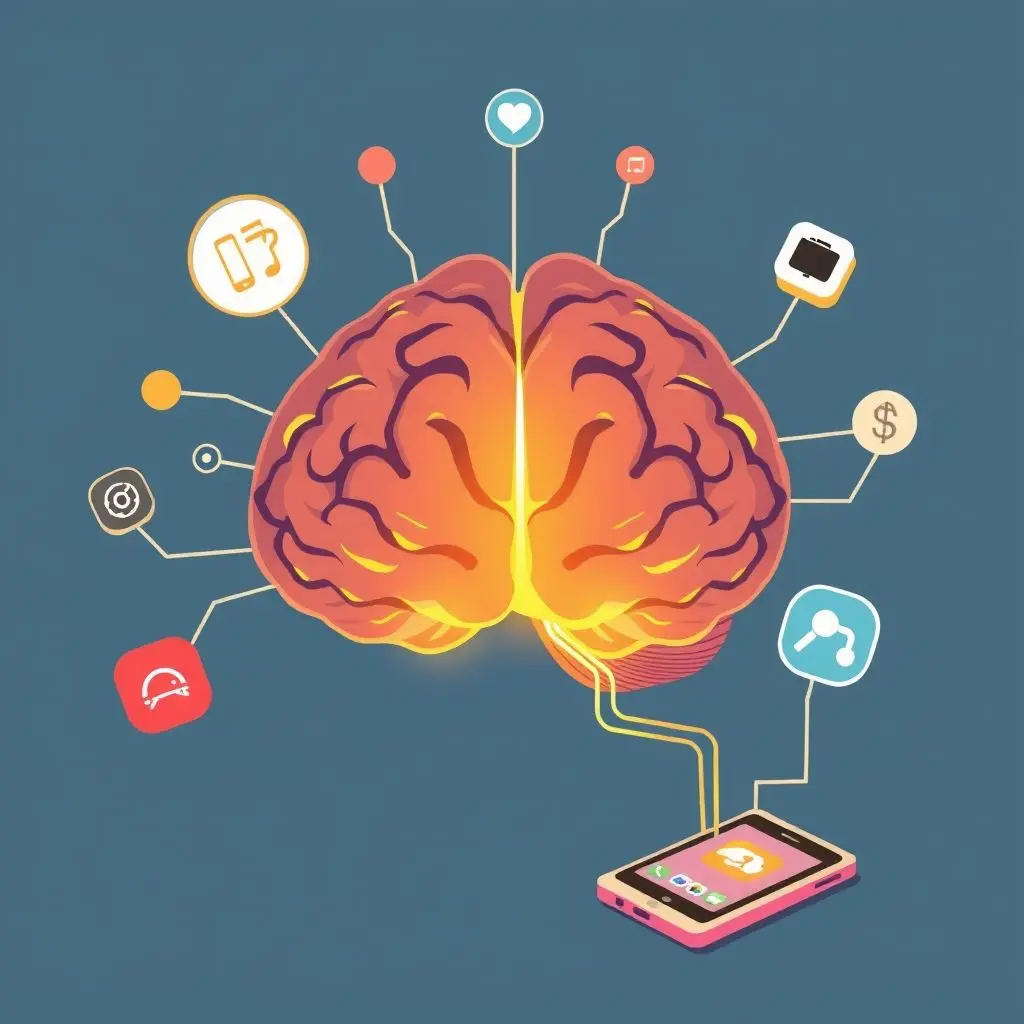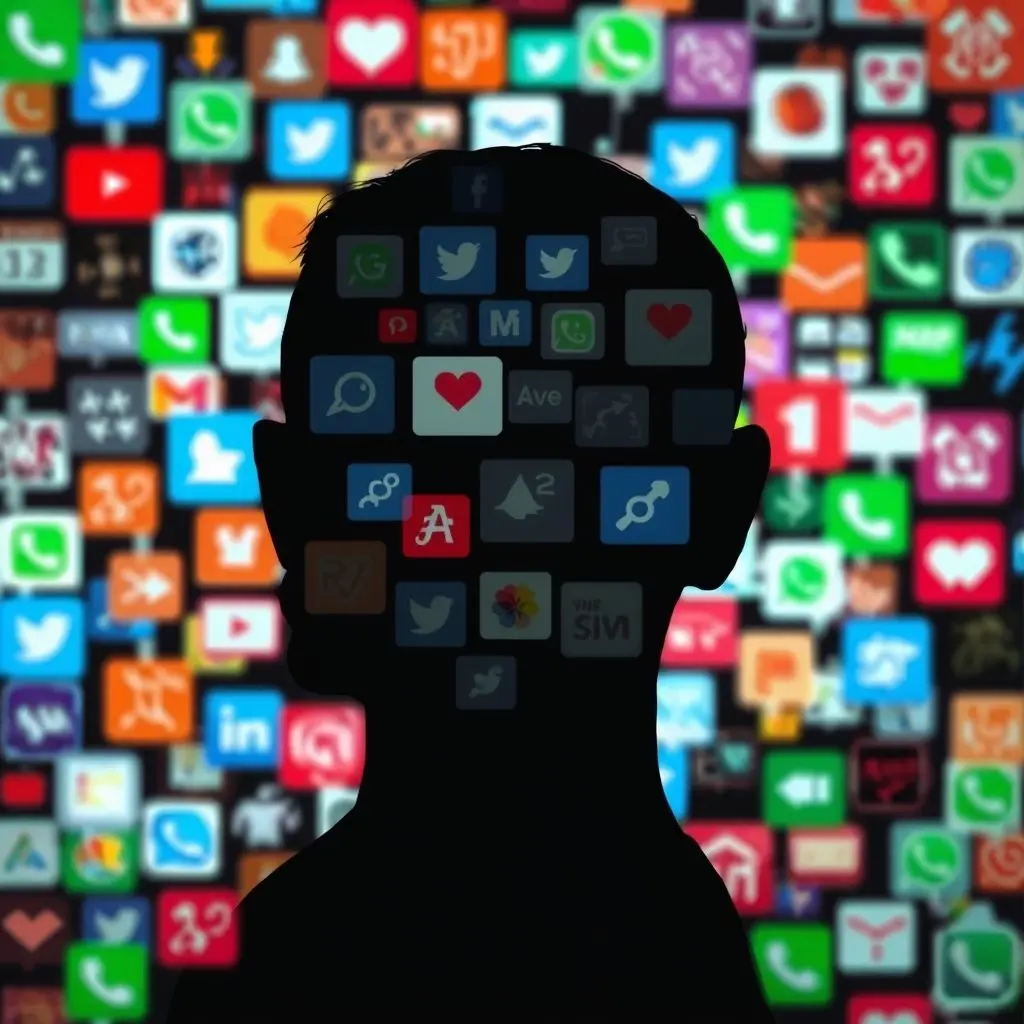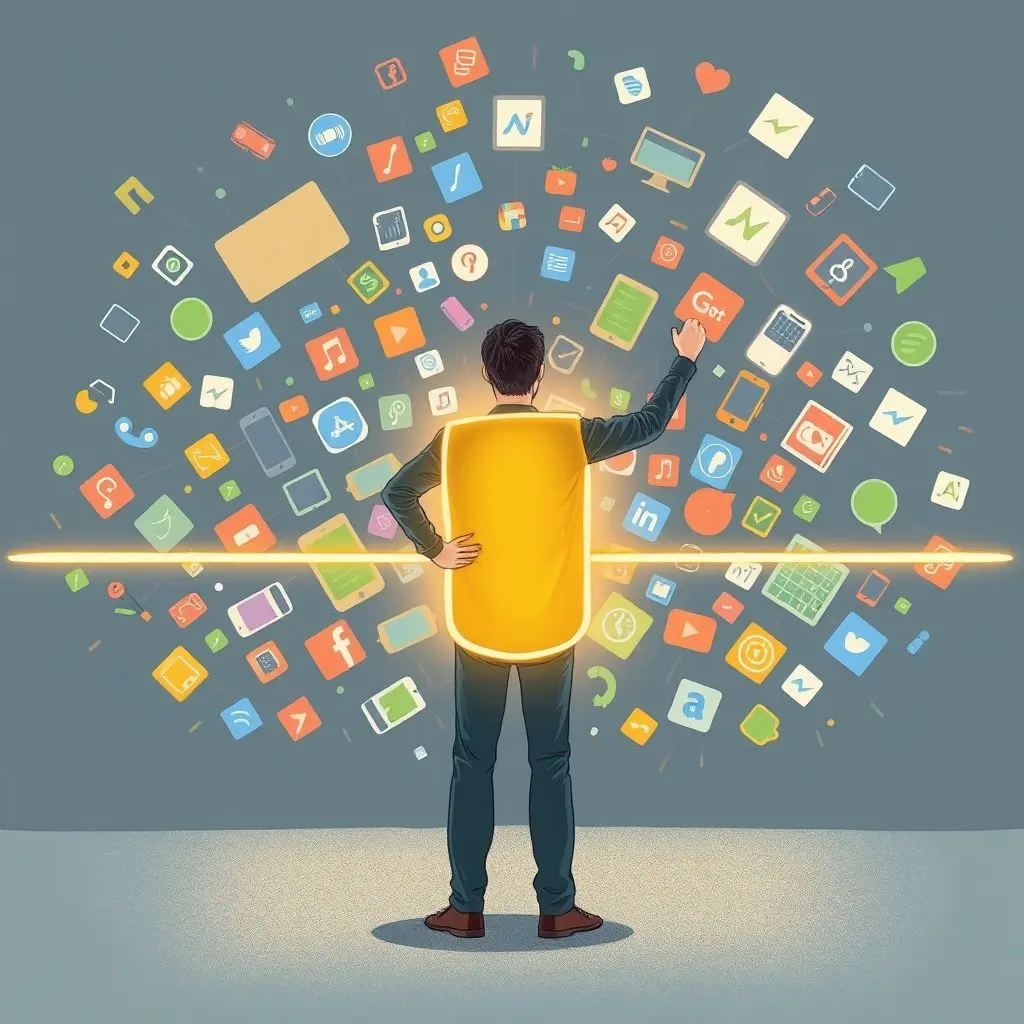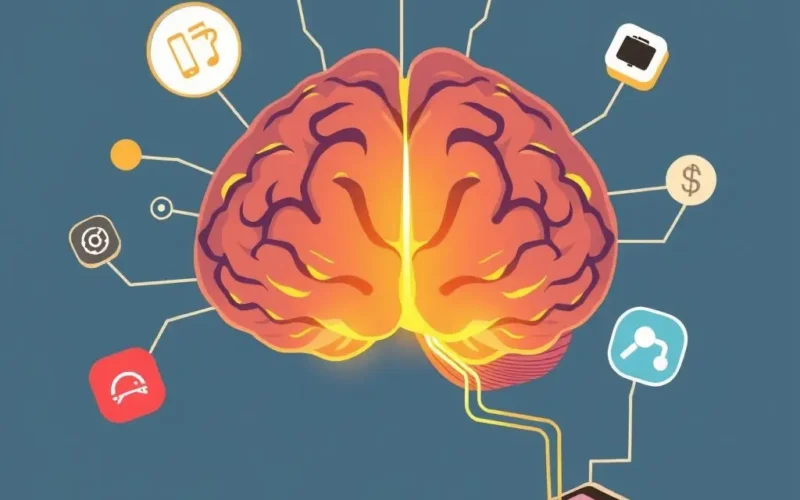Ever feel like your phone has an invisible magnet? You pick it up just for a second, maybe to check the time, and the next thing you know, 20 minutes have vanished into the digital ether. You’re scrolling, clicking, bouncing between apps, often without a conscious thought. If this sounds unsettlingly familiar, you’re not alone. And there’s a powerful, tiny chemical inside your own head that’s playing a starring role in keeping you glued to that screen: dopamine.
Think of it like this: your brain is wired for rewards. It seeks out things that feel good and encourages you to repeat the actions that led to that good feeling. For centuries, this system helped us survive – finding food, shelter, social connection. Now? Technology, particularly smartphones and social media, has figured out how to tap directly into this ancient reward pathway, creating what many call the ‘dopamine loop’.
Here’s a quick visual breakdown of this sneaky science. We made a short video about it:
As the video hints, every ping, every like, every new message notification triggers a tiny release of dopamine. It’s a little hit, a mini-celebration in your brain. And that feels good. So good, in fact, that your brain logs it as a successful action and makes a note: “Do that again!” This craving for the next little hit is the engine driving the endless scroll, the constant checking.
Table of Contents
Deconstructing the Dopamine Loop in Digital Life
Dopamine isn’t just about pleasure; it’s primarily about motivation and seeking behavior. It makes you want, desire, and search. When your phone offers a constant stream of potential rewards – a funny meme, a friend’s update, validation in the form of a like, or the possibility of something new and interesting – your brain stays in a state of seeking anticipation. The loop looks something like this:
Cue: Your phone buzzes, a notification pops up, or you simply feel a moment of boredom or uncertainty.
Routine: You pick up your phone, unlock it, and start scrolling/checking.
Reward: You see something new, get a like, read a message, find something entertaining – resulting in a dopamine hit.
Craving: The good feeling is transient, leaving you wanting another hit, reinforcing the desire to repeat the routine the next time you get a cue.
This loop is incredibly powerful because tech companies are brilliant at engineering their platforms to maximize these rewards. They use variable reward schedules – sometimes you find something amazing instantly, sometimes you scroll for a while. This unpredictability is actually *more* addictive than consistent rewards, similar to how slot machines work. Your brain thinks, “The next scroll might be the one!”

How Tech is Engineered to Hook Your Brain
It’s not an accident. App designers and social media platforms employ sophisticated psychological principles to keep you engaged. Beyond variable rewards, consider:
- Notifications: These are explicit cues, designed to interrupt whatever you’re doing and pull you back in.
- Infinite Scroll: There’s no natural stopping point. Unlike a book with a finite number of pages, the content just keeps loading, encouraging endless consumption.
- Personalization: Algorithms learn what you like and feed you more of it, making the potential rewards more targeted and compelling.
- Social Validation: Likes, comments, shares, and followers tap into our deep-seated need for social acceptance and belonging, providing potent social rewards.
- Fear of Missing Out (FOMO): The constant stream of updates creates anxiety that something important or exciting is happening without you, driving compulsive checking.
These features aren’t inherently evil, but their combination creates an environment where it’s incredibly easy for your brain’s reward system to get stuck in an unhealthy loop.

The Not-So-Good Side of Constant Dopamine Hits
While a little dopamine hit feels good, constantly bombarding your brain with these digital rewards can have consequences:
- Shorter Attention Span: Your brain gets used to rapid-fire stimuli and instant gratification, making it harder to focus on tasks that require sustained attention or don’t offer immediate rewards.
- Increased Anxiety and Stress: The pressure to be always ‘on’, comparison with curated online lives, and notification overload can contribute to mental health challenges.
- Disrupted Sleep: Using devices before bed suppresses melatonin, and the mental stimulation keeps your brain wired, making it difficult to fall asleep.
- Reduced Tolerance for Boredom: Your brain loses the ability to comfortably handle downtime or stillness, constantly seeking external stimulation. Boredom is crucial for creativity and introspection!
- Difficulty with Deeper Rewards: The constant stream of easy, shallow rewards can make it harder to appreciate or pursue activities that offer deeper, more meaningful (but often slower-building) rewards, like learning a new skill, building strong relationships, or achieving long-term goals.

Strategies for Retraining Your Brain and Breaking Free
Understanding the dopamine loop is the first step. Taking back control is the next. It’s not about never using tech again, but about using it intentionally. Here’s how you can start to rewrite your brain’s habits:
- Become Mindful: Pay attention to *why* you pick up your phone. Is it a conscious decision or an automatic reaction to a cue (boredom, notification, transition)?
- Turn Off Notifications: This is perhaps the single most effective step. Silence non-essential app notifications. You decide when to check your phone, not the apps.
- Schedule Tech-Free Time & Zones: Designate specific times (e.g., the first hour after waking, the last hour before bed) or places (e.g., bedroom, dining table) where phones are off-limits.
- Set App Limits: Use built-in phone features (Screen Time on iOS, Digital Wellbeing on Android) or third-party apps to set daily time limits for addictive apps. Stick to them.
- Change Your Homescreen: Remove addictive apps from your primary homescreen. Put them in folders or on secondary screens so you have to make a deliberate effort to open them.
- Find Alternative Rewards: Engage in activities that provide deeper, non-digital satisfaction – exercise, reading a physical book, spending time in nature, pursuing a hobby, connecting with people face-to-face.
- Embrace Boredom: Allow yourself to be bored occasionally. Resist the urge to instantly fill every pause with your phone. See what thoughts and ideas emerge.
- Perform a ‘Digital Declutter’: Unfollow accounts that make you feel bad, unsubscribe from unnecessary emails, delete apps you don’t use. Reduce the noise.

Moving Towards Mindful Tech Use
Our technology isn’t going anywhere, and it offers incredible tools and connections. The goal isn’t to become a luddite, but to understand the powerful psychological mechanisms at play and use that knowledge to foster a healthier relationship with our devices. By recognizing the dopamine loop and actively working to step outside of it, you can reclaim your attention, improve your focus, and find more fulfillment in the analog world.
Common Questions About Tech and Your Brain
Is tech addiction a real addiction?
While not yet formally classified in the same way as substance addiction in major diagnostic manuals (like the DSM-5, which includes Gambling Disorder but refers to Internet Gaming Disorder as a condition for further study), the *behavioral patterns* and *impacts* on the brain’s reward pathways share many similarities with traditional addictions. Many researchers and clinicians consider problematic tech use a behavioral addiction due to its compulsive nature and negative consequences.
How do I know if I’m stuck in the loop?
Signs include feeling anxious or restless without your phone, constantly checking it even when you don’t intend to, spending more time on devices than planned, neglecting responsibilities or relationships because of tech use, experiencing negative emotions (sadness, anxiety) related to online content, and finding it difficult to cut back despite wanting to.
Can I reset my brain’s dopamine response?
You can’t permanently ‘reset’ your dopamine system, but you can certainly retrain it. By reducing the frequency and intensity of instant, variable digital rewards and seeking out activities that provide delayed but more substantial rewards, you can shift your brain’s priorities and reduce the compulsive craving for digital stimulation. It’s about building new habits and strengthening different neural pathways.
Are some apps worse than others?
Apps designed for infinite scrolling, unpredictable social validation (likes, comments), and constant notifications are generally more likely to trigger and reinforce the dopamine loop compared to apps with finite content or clear, non-addictive functions (like a weather app or banking app). Social media, short-form video platforms, and certain mobile games are often highlighted as particularly potent in this regard.
Taking Charge of Your Digital Well-being
Understanding the sneaky science behind why your phone feels so compelling is incredibly empowering. It’s not a moral failing; it’s your biology interacting with expertly designed technology. Armed with this knowledge and practical strategies, you have the power to interrupt the loop, regain control over your attention, and build a digital life that serves you, rather than the other way around. Your brain will thank you for it.


